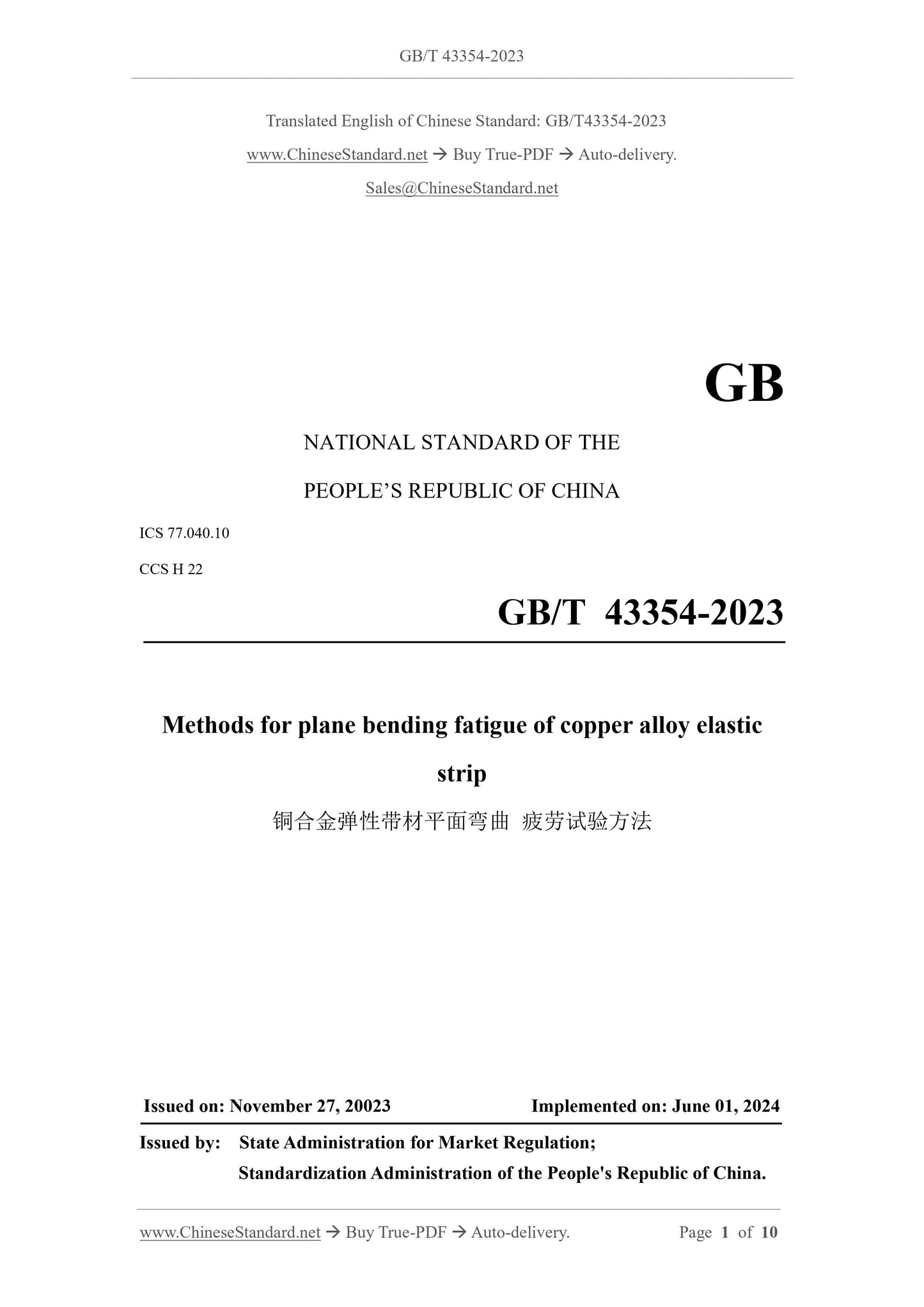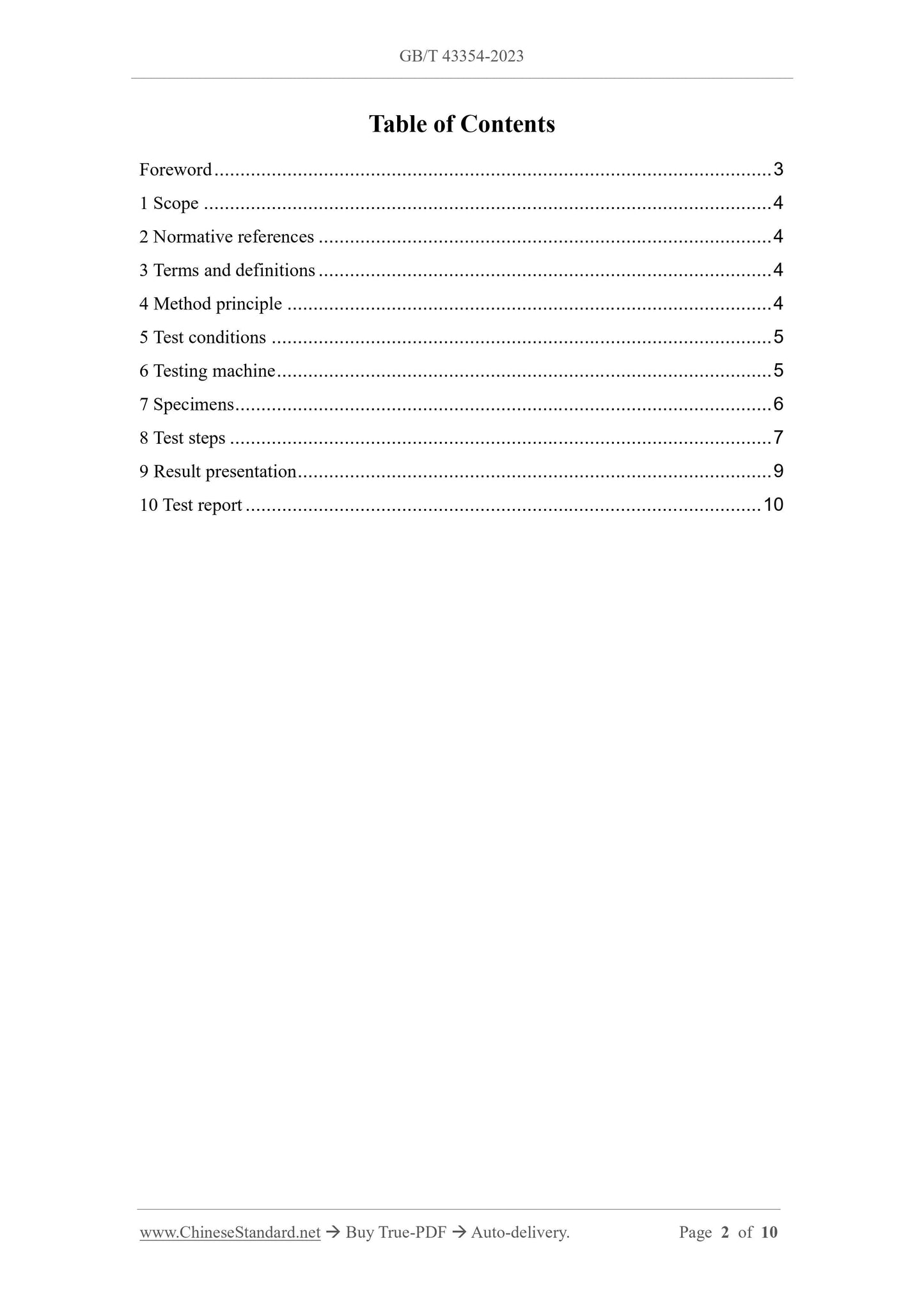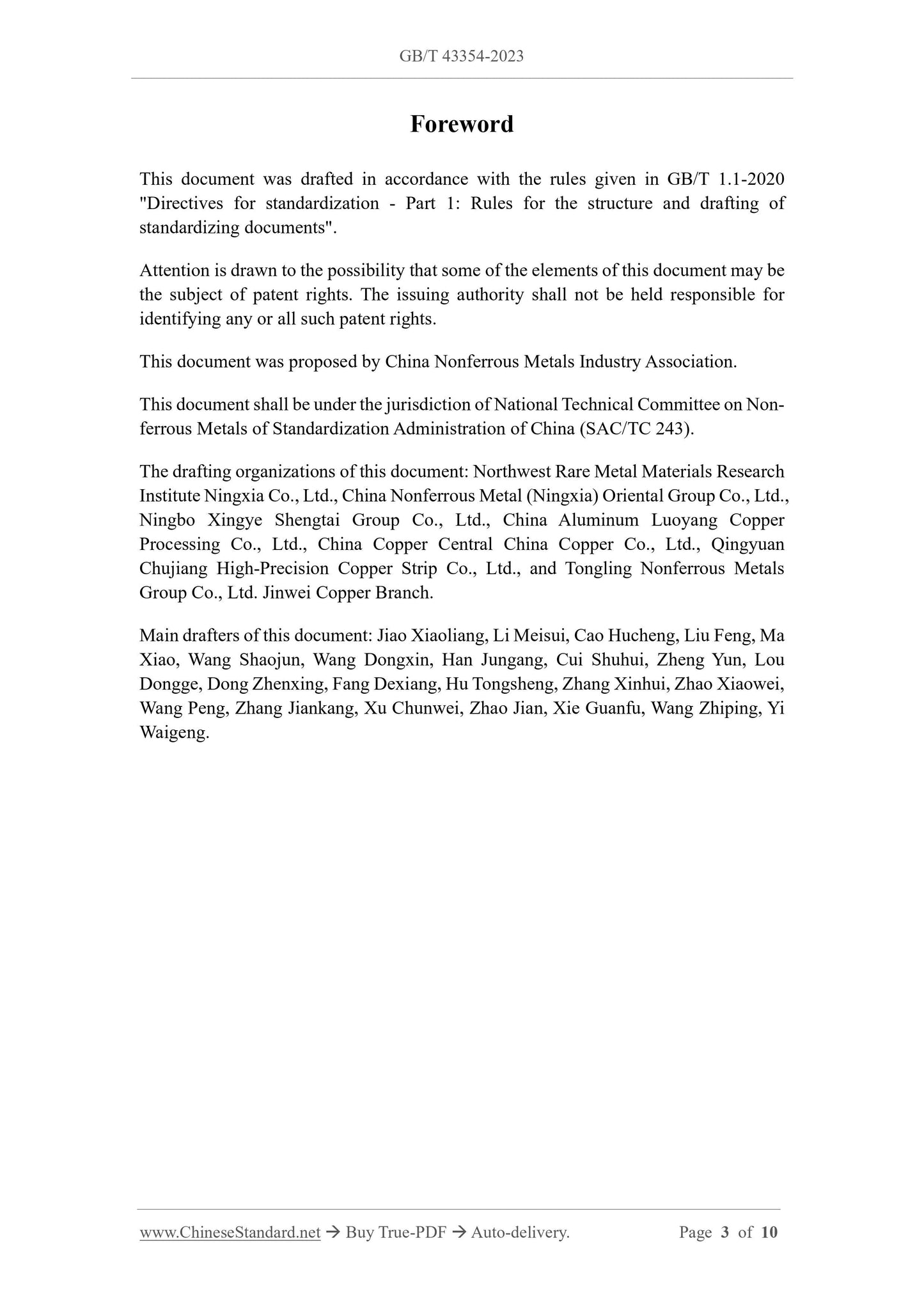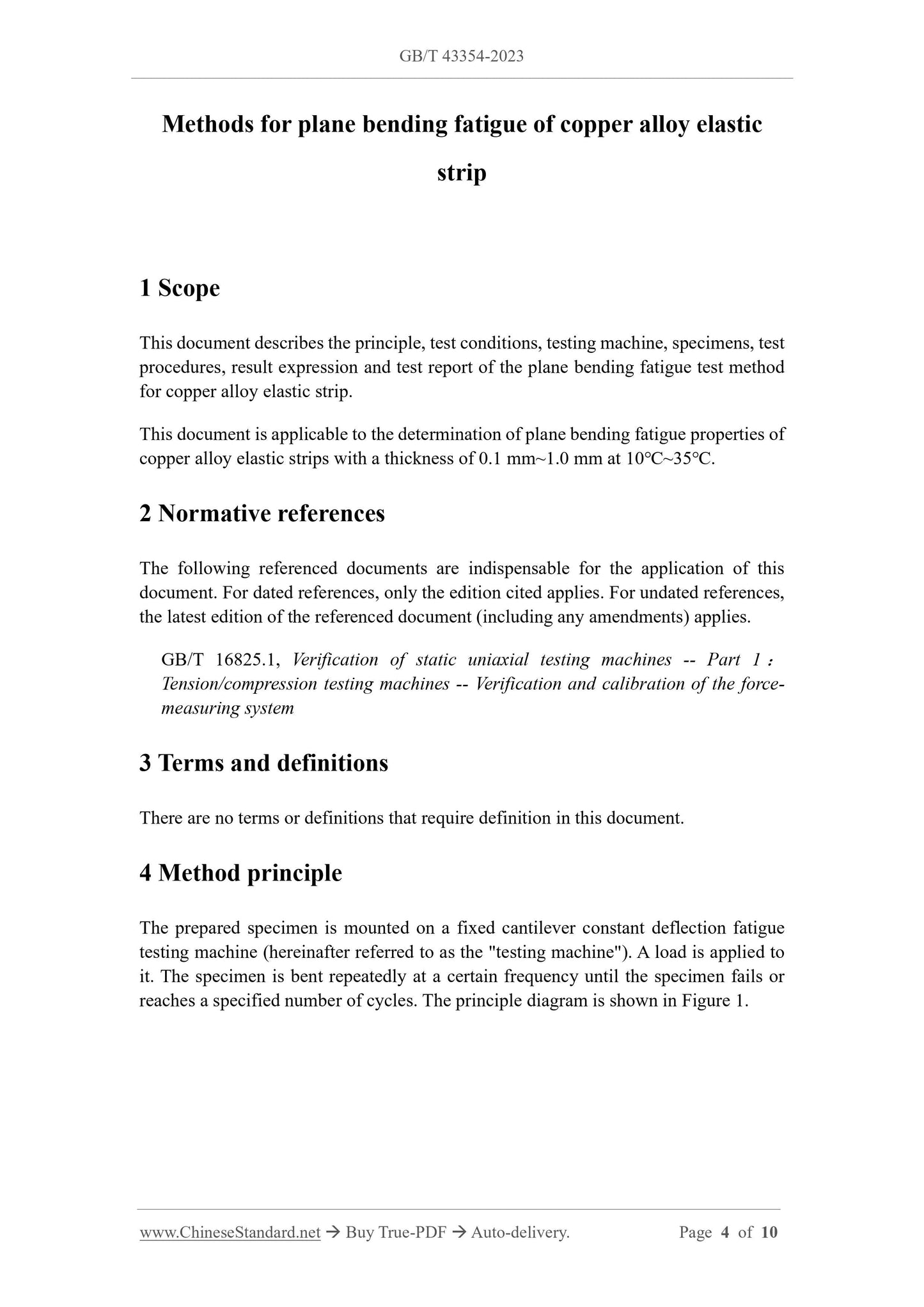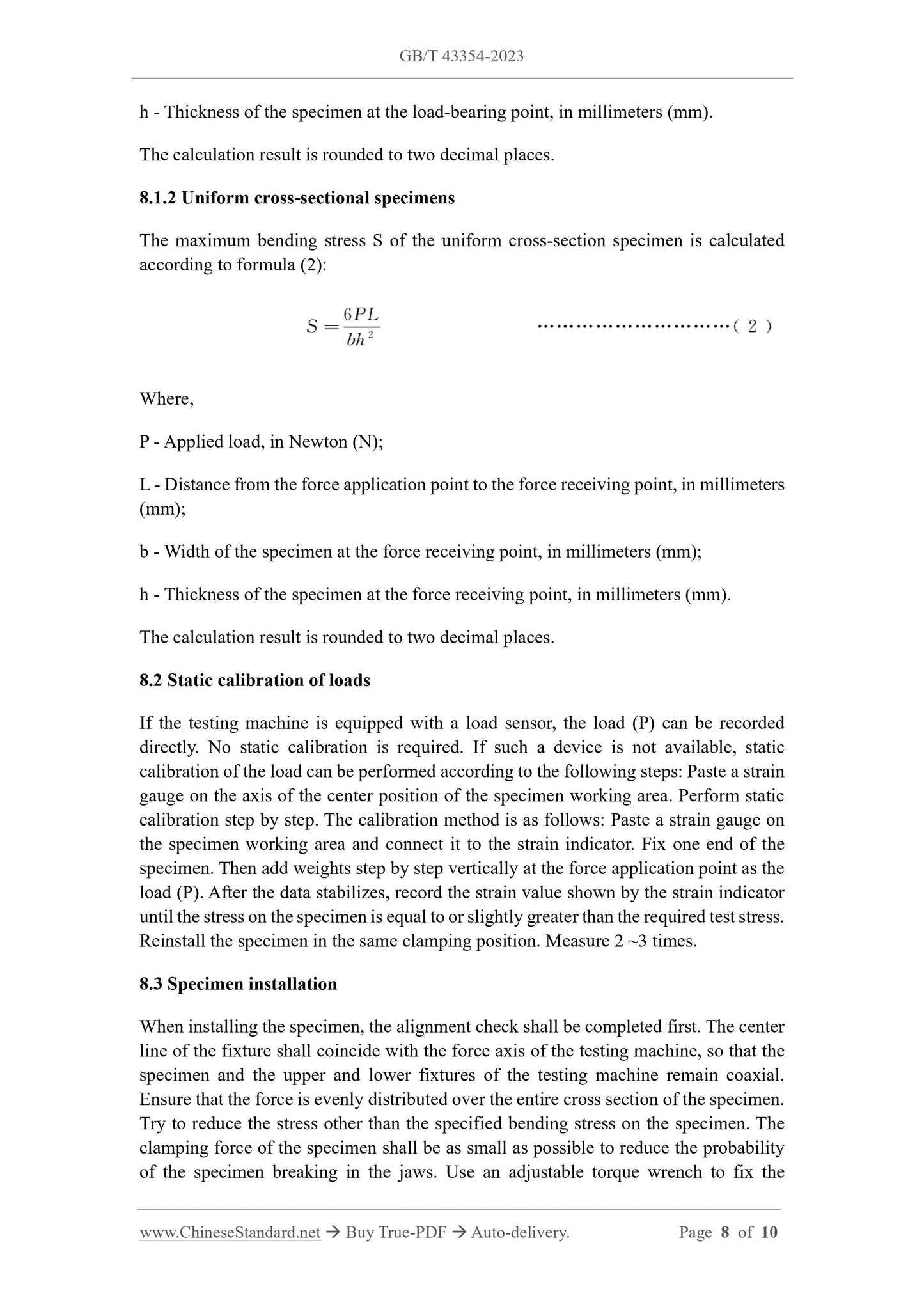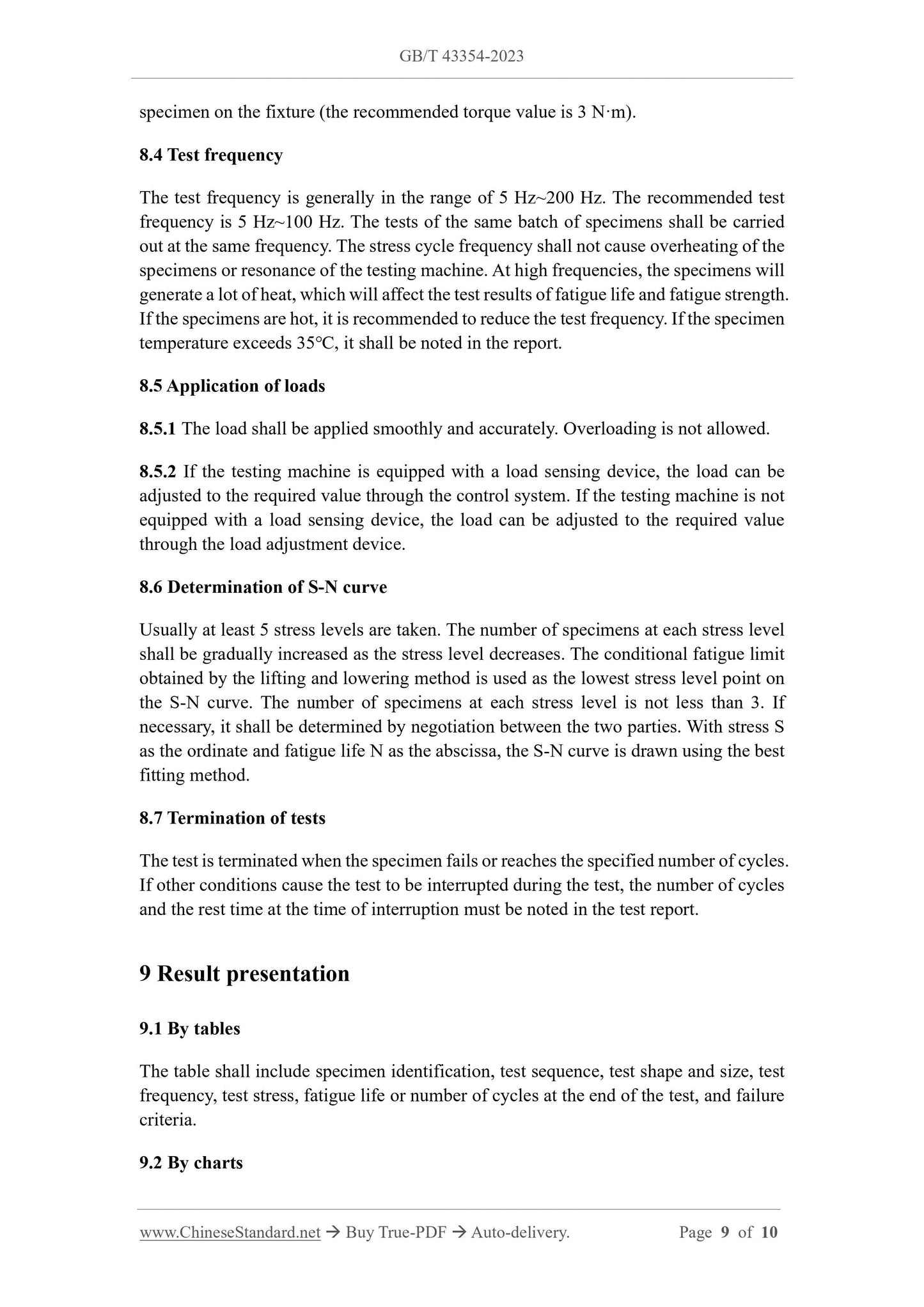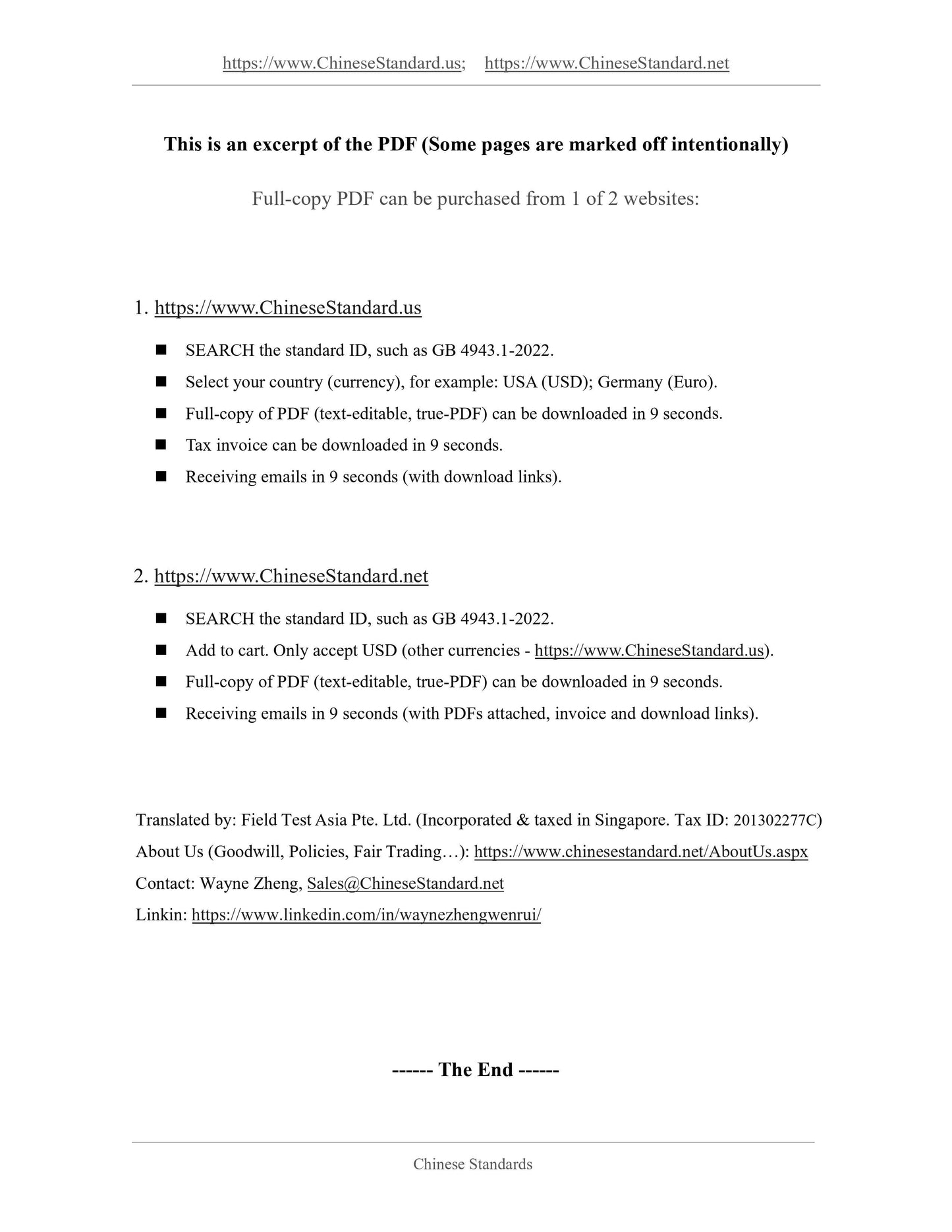1
/
of
7
www.ChineseStandard.us -- Field Test Asia Pte. Ltd.
GB/T 43354-2023 English PDF (GB/T43354-2023)
GB/T 43354-2023 English PDF (GB/T43354-2023)
Regular price
$165.00
Regular price
Sale price
$165.00
Unit price
/
per
Shipping calculated at checkout.
Couldn't load pickup availability
GB/T 43354-2023: Methods for plane bending fatigue of copper alloy elastic strip
Delivery: 9 seconds. Download (and Email) true-PDF + Invoice.Get Quotation: Click GB/T 43354-2023 (Self-service in 1-minute)
Newer / historical versions: GB/T 43354-2023
Preview True-PDF
Scope
This document describes the principle, test conditions, testing machine, specimens, testprocedures, result expression and test report of the plane bending fatigue test method
for copper alloy elastic strip.
This document is applicable to the determination of plane bending fatigue properties of
copper alloy elastic strips with a thickness of 0.1 mm~1.0 mm at 10℃~35℃.
Basic Data
| Standard ID | GB/T 43354-2023 (GB/T43354-2023) |
| Description (Translated English) | Methods for plane bending fatigue of copper alloy elastic strip |
| Sector / Industry | National Standard (Recommended) |
| Classification of Chinese Standard | H22 |
| Classification of International Standard | 77.040.10 |
| Word Count Estimation | 8,863 |
| Date of Issue | 2023-11-27 |
| Date of Implementation | 2024-06-01 |
| Issuing agency(ies) | State Administration for Market Regulation, China National Standardization Administration |
Share
